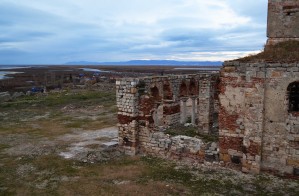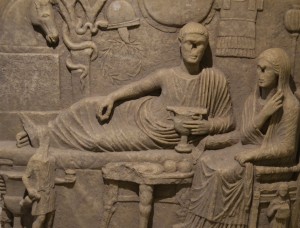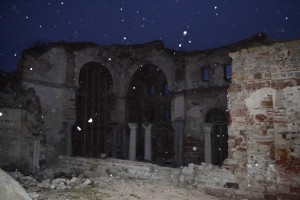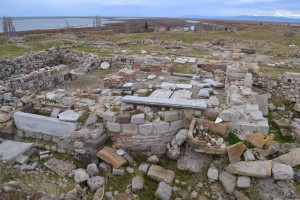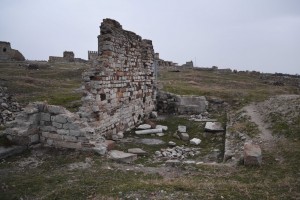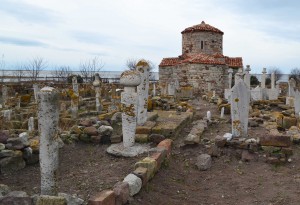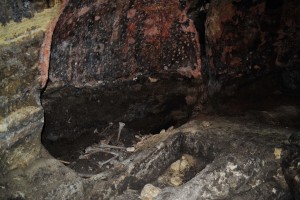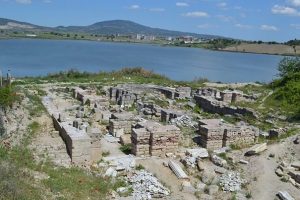Archive for January 10th, 2016
Enez is at the mouth of the Meriç (Evros in Greek) river, which passes into the Thracian hinterland to Edirne (Adrianople in Byzantine times) and until a century ago was navigable to Plovdiv and beyond, where the river was known as the Maritsa. This made Ainos the natural site for a major port where the river traffic could unload grain and other supplies and seagoing ships could take the goods to Constantinople and the rest of the empire.
Ainos was mentioned in The Iliad and has been around since before the 5th century BCE. Justinian appears to be responsible for the walls of the citadel that are visible today, at least according to the marvellously unreliable Procopius. This would mean that the city had much of its present shape in the 6th century. It was prosperous then with its thriving port and lucrative salt and fishing industries.
However, from the late 11th century, Constantinople’s hold on the area weakened and it became a garrison town as forces from the Balkans began to fancy their chances of conquest. Things became messy in the late 13th century when the wonderfully named Duke Friedrich of Schwaben burst in and stole anything he could carry and the notorious Fourth Crusade ran rampant on their way to sack Constantinople. A string of invasions, sieges, civil wars and annoyed Venetians made Ainos so unstable that the citizens paid protection money to a Genoese pirate named Francesco Gattilusio. This was a good move because nothing major happened to the weary citizenry of Ainos from around 1364 to 1456, which was when the unstoppable Mehmet II added the area to the Ottoman Empire.
Ainos appears to have been of minimal importance to the Ottomans. The city went through a number of name changes – Denio, Enio, Porta Deno – depending on who was running it that day. The major powers wrote the place off as too difficult to defend and, in time, it became a peaceful Greek town. The railway bypassed Enez at the end of the 19th century, immediately causing the world to lose interest in the place. It became an isolated and rarely visited river delta, of interest only to hunters who could shoot large migratory birds, and farmers who tilled the alluvial soils.
Then, in 1912, came the Balkan Wars, followed rapidly by World War I and the Greek-Turkish War that finished with the border being drawn down the Meriç River, separating the citizens of Enez from their farming and hunting grounds. The population exchange of 1923 removed most of the population to Alexandropolis, only 20km away but inaccessible. A much smaller group of Turks was relocated to Enez, where they enjoyed the beachside location and disregarded the ruins. Today, it is a pleasant place where hunters still decimate enormous flocks of Whooper Swans. These days, the only outsiders to bother Enez are the rich Edirneli who have beach houses here.
Enez is Archaeology heaven. Many discoveries remain to be made in this wild frontier of Byzantine obscurity.
There are several Byzantine churches in Enez. Click on the pictures for details.
Fatih Camii / ‘Aya Sofya’
Hagios Gregorios Neokaiserios Chapel
Theotokos Chrysopege Chapel
Has Yunus Baba Türbesi / Chapel of Hagios Evplos
Aya Triada Chapel
Kral Kilisesi / Kral Kızı Basilikası / The King’s Daughter Basilica
The most accessible guide to Ainos is Robert Ousterhout and Charalambos Bakirtzis’s “The Byzantine Monuments of the Evros/Meriç River Valley.”

